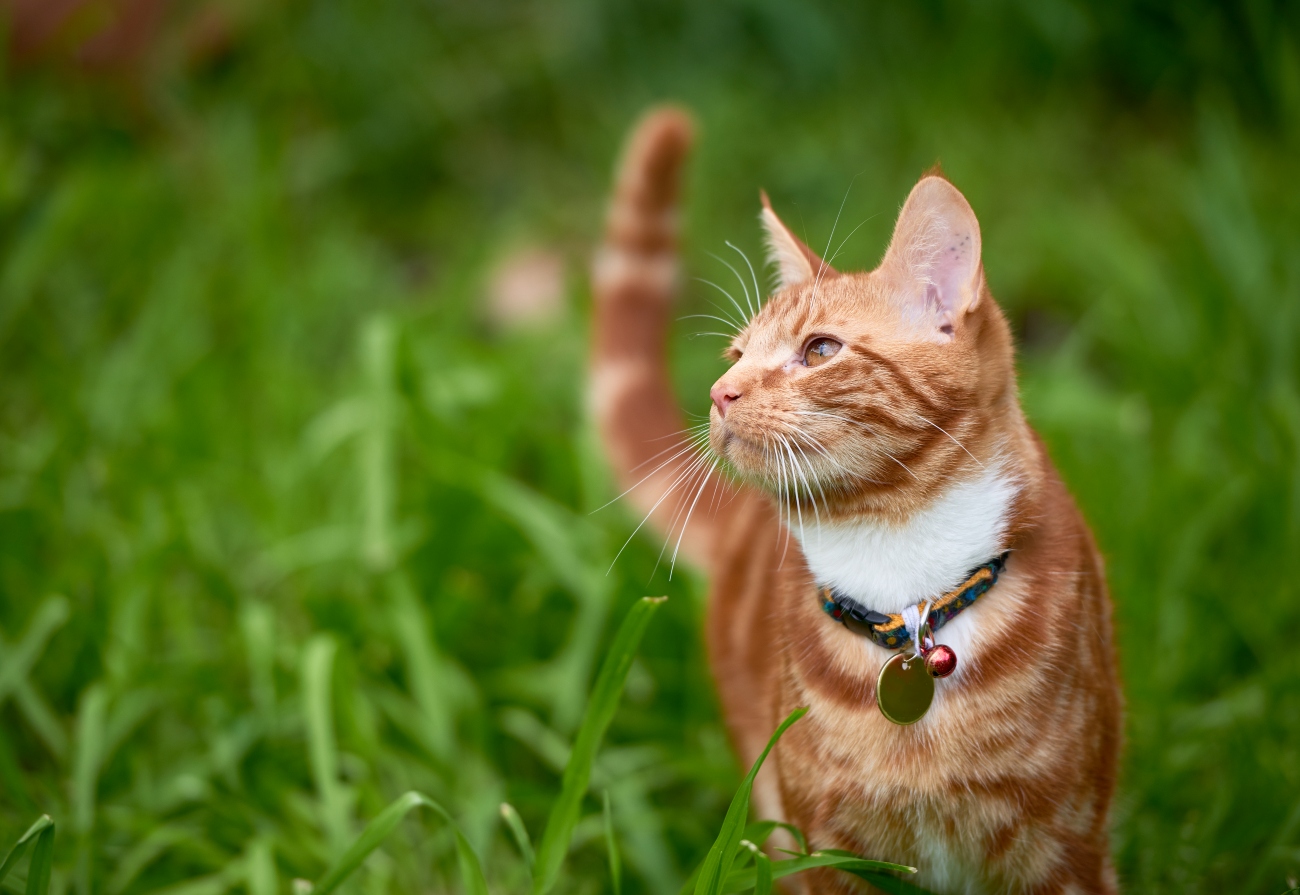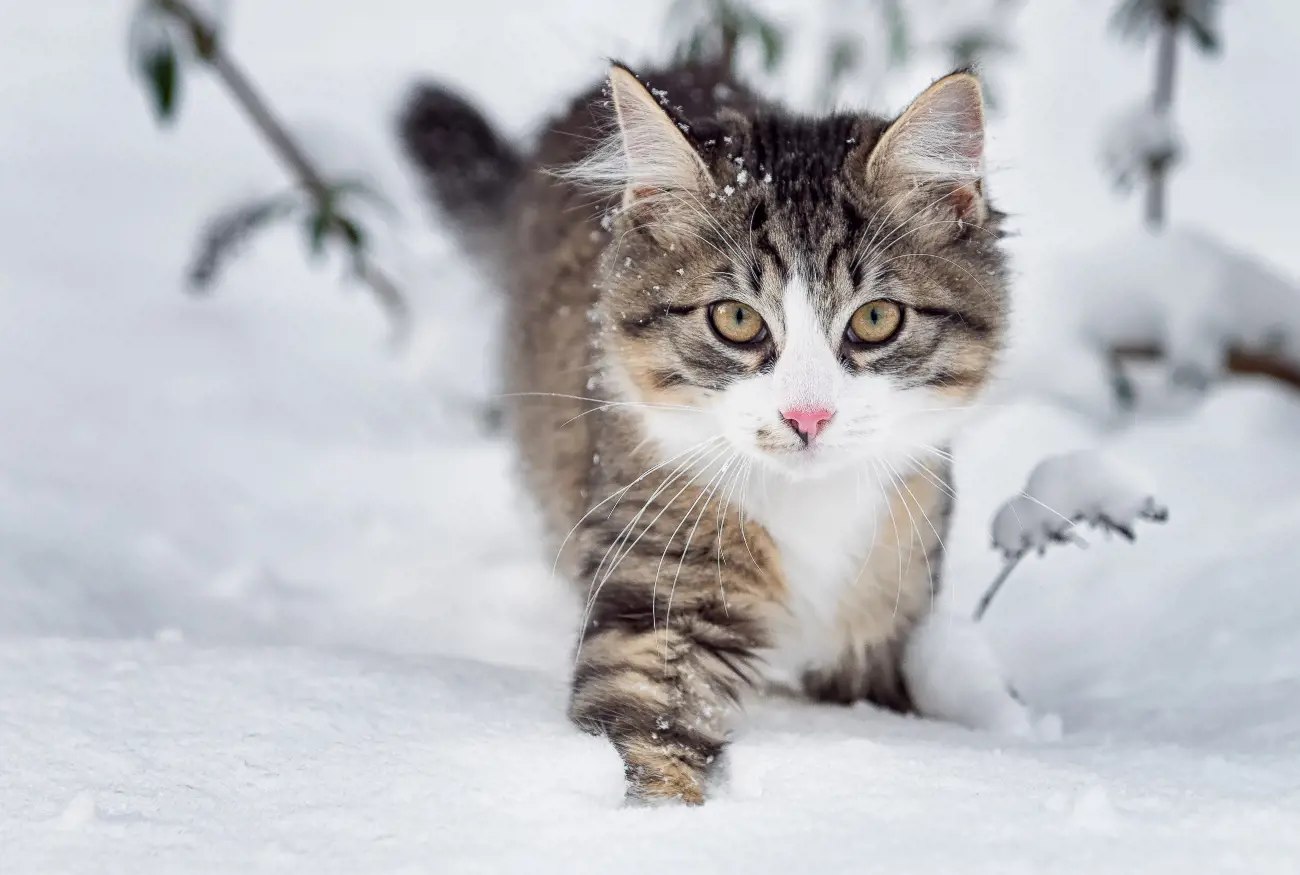How to transition an outdoor cat to an indoor cat?
27th April, 2023

Are you worried about the outdoor risks to your cat and want to move them indoors? Learn why it’s a good idea, how to make the change and signs of stress in your pet.
The African Wild Cat – an excellent hunter, night time prowler and ancestor of all modern pet felines. These short-haired cats live their whole lives outdoors, but it’s not always the same for their domesticated counterparts.
A few decades ago, pet cats would spend a great deal of their time outside, but in recent years, owners prefer to keep ‘house cats’. So, what caused this shift and what’s really best for your beloved mog?
Discover how to find the right balance and how cat health insurance can protect your pet whether they roam indoors or out.
Why turn your outdoor cat into an indoor cat?
So, before we begin, let’s get one thing clear – all cats should spend a little time outside. They need natural light, fresh air and a chance to stretch their legs just like us.
It’s when they enjoy unlimited access to the great outdoors that the risks drastically increase, especially when they wander far from your property. But what dangers lurk once they leap over your fence?
Accidents and injury
Without controlled outdoor time, there's an increased risk of accidents, which could see you claiming on your cat health insurance. Whether they get attacked by a dog or run over by a car, no pet parent wants that!
Catfights
Ever heard cats whaling and screeching in the night? They’re probably in a fight! And your dear pet could be brawling with the rest if let loose while you sleep. Injuries can lead to abscesses and other infectious diseases.
Poisonous substances
Curious by nature, your cat won't shy away from trying a tasty treat. But what seems appealing could be covered in rat poison, which requires emergency care from your vet.
Pests
Don't be surprised if you develop an itch after your feline friend goes wandering outdoors. The further they roam, the more likely they are to come home with fleas or ticks.
Not returning home
While it’s easy to think ‘it won’t happen to my cat,’ a pet that doesn’t come home isn’t so uncommon. They might get lost, stolen or trapped in someone’s shed if they’re allowed to wander where they want.
Are there any risks to an indoor cat?
All this talk of danger to your pet might tempt you into never letting them out again – but hold on. Keeping your cat indoors 24/7 is also unhealthy and comes with its own set of risks. Let’s take a closer look.
Weight management
With less space to run around, it’s no surprise house cats get less exercise – check out these great toy ideas to keep them active. While it might look idyllic to sit around all day, napping and eating, it can take its toll on your feline’s waistline.
Once your pet becomes overweight, it puts them at risk of other health concerns, like diabetes.
Speak to your vet about the best diet for your indoor cat to make sure they aren’t overeating. Got cat health insurance with Purely Pets? Contact our 24-hour vet video service for weight loss advice.
Lower urinary tract disease (LUTD)
This health issue is most common in middle-aged house cats. Why? No one’s entirely sure, but it’s likely a combination of excess weight, little exercise and possible emotional stress.
Watch for signs of straining to pee, bloody urine and going to the toilet around the house.
Separation anxiety
Cats are independent and love spending time with themselves, right? Usually, but when they spend a lot of time indoors with their humans, they can develop separation anxiety when left alone.
Speak to your vet if you notice signs of excessive grooming, damage to your home or urinating outside the litter box. If they need to see a behaviourist, this might be covered by your cat health insurance.
Stress
Your feline friend’s natural instincts encourage them to hunt, climb, scratch and mark its territory. When kept indoors, your pet has little opportunity to exhibit these behaviours, which can quickly lead to them becoming bored and stressed.
Other household hazards
It’s not just outdoor hazards you need to be mindful of as a pet parent. House plants, like lilies,are highly toxic to cats, and so are many of your day-to-day cleaning products. Avoid poisonous plants and keep substances locked away from curious paws.
How to change an outdoor cat to an indoor cat

So, you think your feline is spending too much time outdoors and want to transition to a predominately indoor pet. We've got you covered!
Make the change gradually
While some cats will take the transition well, others will let you know they still want to be outside, clawing at door handles and scratching walls in protest.
Don’t worry. Stick with it, and your pet will soon get used to its new way of life. Here are a few quick tips to make it easy on your both:
- Keep your cat indoors for increasing amounts of time after feeding.
- Set up a warm, cosy spot that’ll convince them indoors is better than out (works particularly well in winter).
- Make sure you have everything your cat needs indoors – litter tray, toys, bed and food and water bowls.
- Throw treats to train them to run away from open doors rather than out.
- Most importantly, keep calm and never get cross with your pet.
Make time inside fun
If your cat knows it’ll enjoy itself more at home, they might lose the urge to go outside all the time. Here are a few ideas to let them entertain their natural instincts while staying indoors:
- Provide lots of toys to curb their urge to hunt outdoors.
- Set up plenty of high climbing opportunities.
- Put a cosy cushion by the window so they can feed their urge to bird watch.
- Give them lots of love and attention.
Don’t neglect outdoor time
Your cat still needs to go out now and again. Knowing that they can still explore the outdoors may also help them adjust to their new house cat lifestyle.
Consider building a ‘catio’ to let your feline spend some time in the sun. This should be an enclosed space where they can’t escape from. If you have high walls and no way it can get out, you can let them run around while you watch.
Want to take them a little further? You could try training them to walk on a lead – just know that not all mogs will like this idea.
Signs and symptoms of stress in cats
Remember, if your cat spends too much time indoors or finds it hard to adjust, they can quickly become stressed. Felines are experts at hiding their feelings, but there are a few ways to tell. According to Cats Protection, you should look out for the following:
- Hiding more than normal and seeming withdrawn
- Less tolerant of people
- Reluctance to use litter tray
- Eating more or less than usual
- Damaging your furniture
- Excessive meowing, hissing or growling
- Diarrhoea and vomiting
If you’re at all worried about your pet feeling stressed, take them to the vet. Don’t worry about the bills mounting up – your cat health insurance may be able help with that. Be sure to check the terms and conditions of what is covered on your policy.
Letting an indoor cat to venture outdoors
Perhaps you’re facing the opposite issue and want to get an indoor cat to venture outside now and again. Outdoor exercise can help keep them healthy but what can you do to lower the risks mentioned above?
- Stay up to date with your pet’s vaccines (not included on cat health insurance but an essential part of your pet budget).
- Get them a pet tracker.
- Apply flea treatments every month.
- Have your cat microchipped and neutered.
Once you’re ready to start training your feline to go out, stick to these steps:
- Wait until they're old enough.The Blue Cross recommends waiting until they’re at least 5 months.
- Start with supervised access in a confined space or on a lead.
Let them out a short while before dinner – they won’t go far when food's nearly ready! - Choose safe times, so steer clear of bonfire night or wet and chilly weather. They feel the cold, too!
- Gradually increase the outdoor time, letting them out when the roads are quiet and there are less people about.
Protect your cat indoors and out
Wherever you choose to keep your beloved cat, there’s always the chance they could get into an accident or suddenly fall ill. With an indoor cat health insurance plan in place, you can get emergency care when your pet needs it most.
With 15 levels of cover to choose from, you can get the right cover for your pet, at the right price.
For award-winning protection from fellow cat lovers, call Purely Pets to get a quick quote today.
Helpful Pages
Recent Posts

Why do Pugs lick the air?
02/10/24Pet Insurance Quote
- 98% claims paid *
- Claims paid directly to vets
- 24/7 vet video consultations
- Interest free monthly payments



